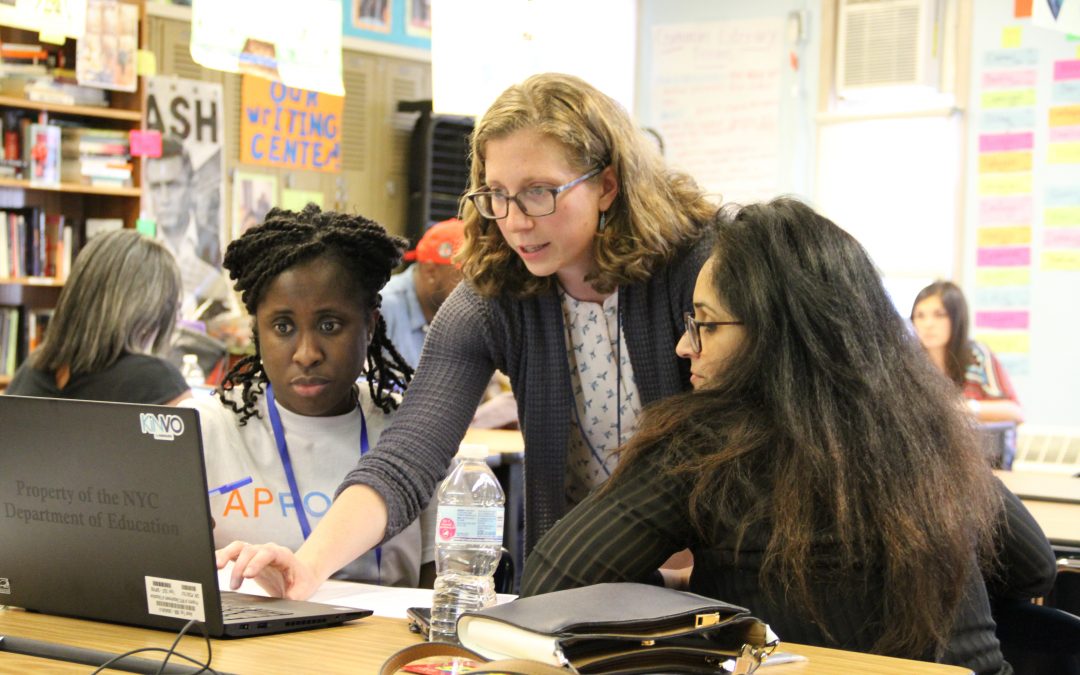I have walked into hundreds of classrooms in the last two decades. Picture two of them. In one, let’s call it the Interactive Classroom, the teacher moderates a student debate on whether it’s ethical to use DNA tests in family planning. In another, let’s call it the Instructive Classroom, students take notes as the teacher presents a set of slides on the biology of genetics.
More classrooms in America look like the Instructive Classroom than the Interactive one. For many students, Instructive classrooms work. However, for students who struggle, fall behind, and fail, evidence suggests that the Interactive Classroom is one part of re-engaging them. Our studies have found that one in eight New York City high school students struggle and fall behind. These students are disproportionately students of color and students in poverty because of pervasive problems in our education system that reflect systems of oppression in the United States.
Committed to helping these students, I began my education career asking, What is the difference between the Interactive Classroom and the Instructive one? The most common answer is that the Interactive one has a certain magic that the other lacks. But there is no magic involved. Instead there is a collection of research and practices on what makes some classrooms more engaging for students who have been failed in the past. Teachers have an exhausting job which makes it nearly impossible to include the space or time to learn the best new research.
But not completely impossible. Ten years ago, we asked how we could make it happen.
That led to more than 120 projects with New York City schools, thanks to the support of New York CIty Department of Education. Through partnerships like the Academic and Personal Behaviors Institute, the Transfer School Institute, and College Access For All, we have had the opportunity to work with more than 500 educators, together examining data, using research, and developing new practices in their own classrooms. Through these projects, we have helped teachers transform learning and build Interactive Classrooms.
We’ve found that transformation requires four key ingredients.
- First, we need to get the latest research to educators while they are doing the work. Too often, educators only get this research during graduate school.
- Second, we must respect experience. Educators bring an understanding that researchers in the field will never have. The real lives of students are more complicated than any study can capture.
- Third, we need to provide interactive ways for educators to test, refine and develop new practices in their classrooms.
- The fourth ingredient is the most difficult. We need to make it easy for school leaders to sustain this change by providing a facilitation roadmap. With support from the Booth Ferris Foundation, we spent the last two years developing it—the Eskolta Learning Center.
In the Center, we’ve put together ready-to-go workshops, complete with a facilitator guide, slides, handouts and activities, research briefs, and sample classroom tools from schools. These materials draw on our change projects in New York City public schools across a range of topics from giving students feedback to creating a welcoming learning environment. You can download and share all the resources with a free account. Our goal is twofold. First, to support the broader community of school leaders who want to help re-engage students. Second, to share wisdom born from the experience of our team and the hundreds of educators we’ve worked with.
Students across the United States sit in classrooms where they desperately need teachers who will spark their interest and engagement, recognize and cultivate their existing potential, and deliver high-level learning. Students who have been failed by the system for years need this teaching the most. By equipping educators with research, exemplar materials, and guidance, we are working to understand and support student success. I’m excited about where the Eskolta Learning Center will take this next.

